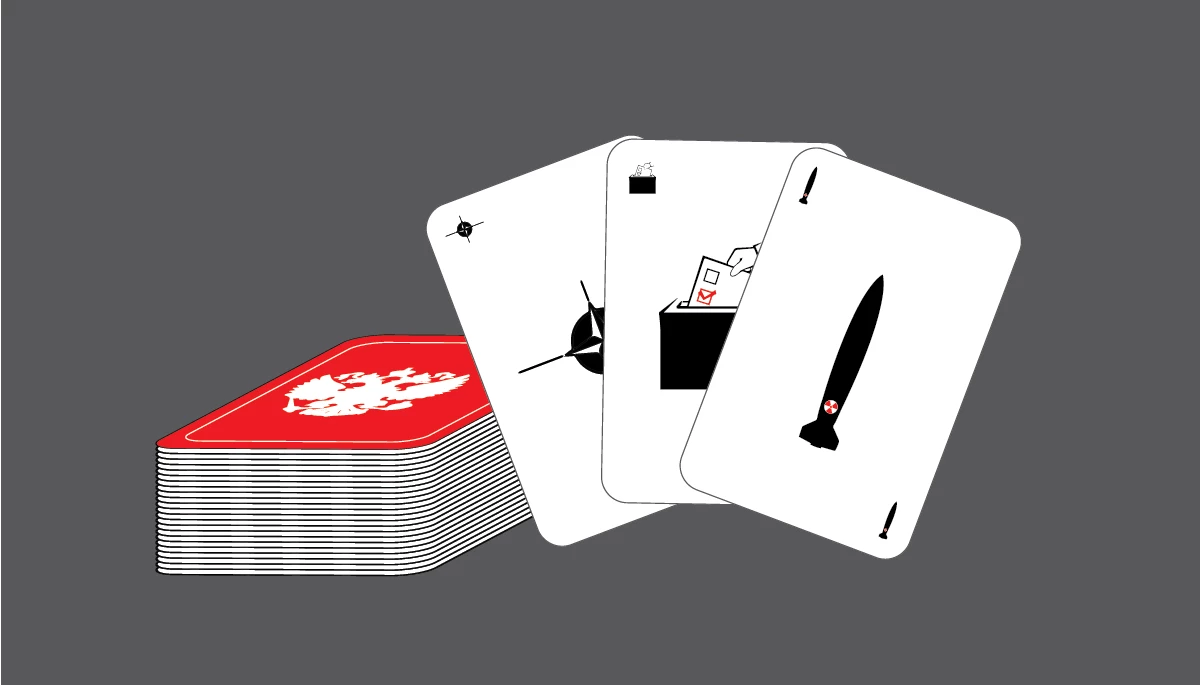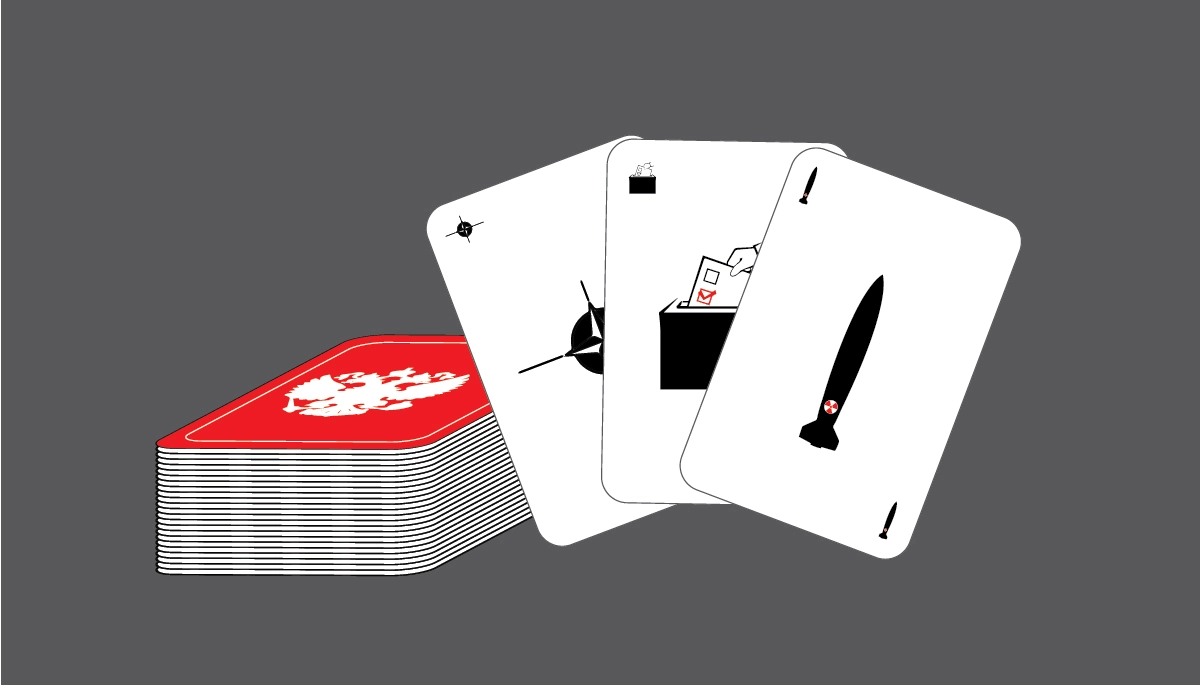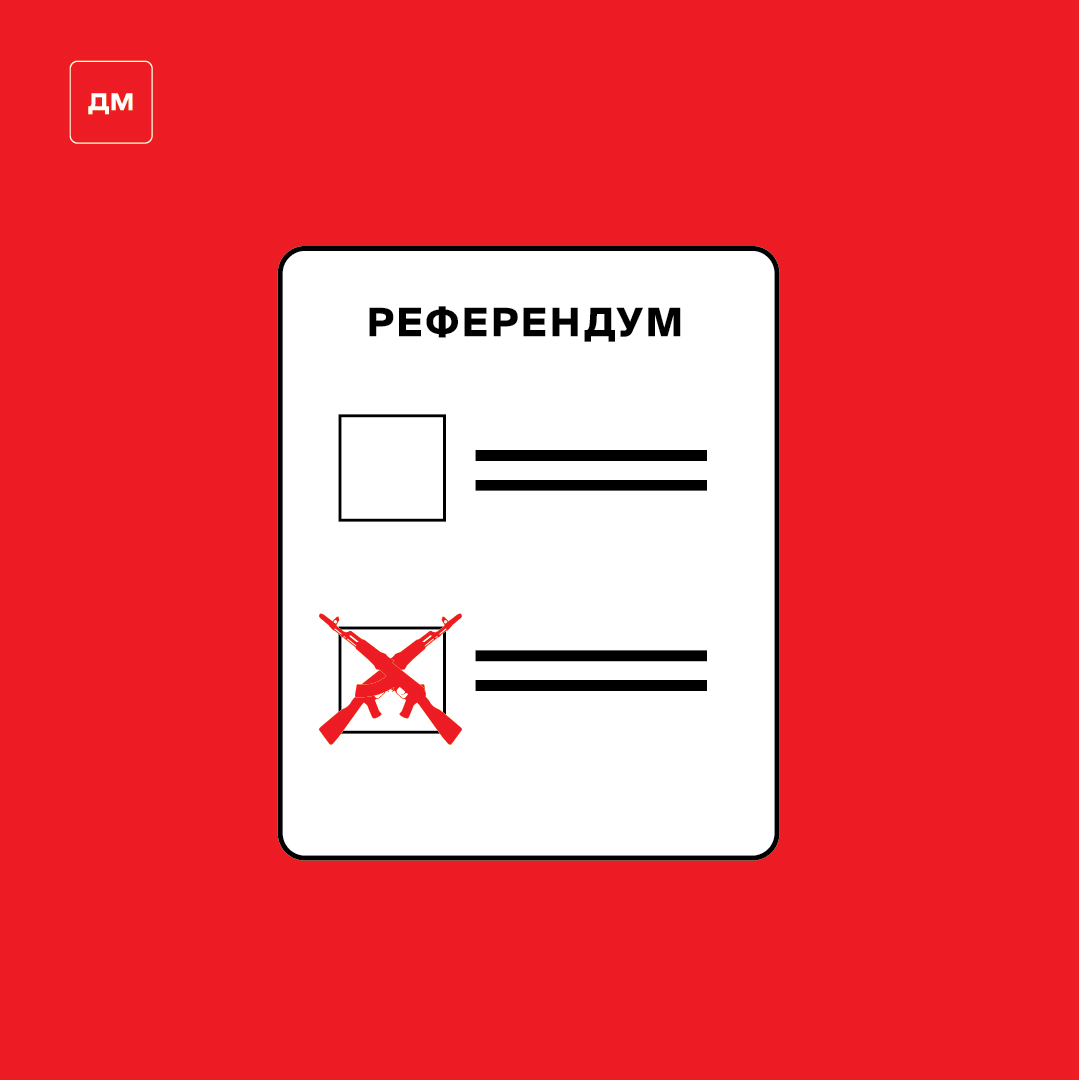
Ukraine’s Dirty Bomb and the “Legality” of the Pseudo-Referenda. Russian Disinformation Monitoring September 26 – October 2
Ukraine’s Dirty Bomb and the “Legality” of the Pseudo-Referenda. Russian Disinformation Monitoring September 26 – October 2


Українською текст читайте тут.
“Detector Media systematically monitors the Ukrainian social media segment and documents the chronicle of Russian disinformation surrounding the full-scale Russian offensive and other topics related to the Russo-Ukrainian war. During the week from September 26 to October 2, 2022, we recorded almost 50 new information injections of Russian propaganda into the Ukrainian media environment. These are new examples of fakes, manipulations, and narratives, some of them are a rehash of old ones, while others are reactions to specific events.
This week was dominated by news about the nuclear threat from Russia, Ukraine’s application for NATO membership, and Russia’s holding of pseudo-referenda in the occupied parts of Ukrainian regions. These topics became the subject of the most disinformation attacks by the Russian propaganda machine.
The Aura of Legitimacy Around the Pseudo-Referenda
To begin with, pro-Russian Telegram channels and Russian media attempted to create an impression of the Russians’ support and legitimacy for the pseudo-referenda for the accession of Luhansk, Donetsk, Kherson, and Zaporizhia regions of Ukraine. Information about a large-scale “celebratory concert” on the occasion of the conclusion of the “people’s vote” in the temporarily occupied territories was spread in an effort to accomplish this goal. In fact, the invaders had to involve the so-called “administrative resources” for this purpose. Prior to the concert, it was established that the list of spectators was pre-approved and that attendance at the “celebration” was mandatory. Furthermore, men were promised a deferral from mobilization based on the results of the “celebration.”
Also, the Russian media tried to legitimize their fabrications in the occupied territories by reporting about “official delegations from all over the world”, saying that these “international observers” prove the “transparency” of the illegal pseudo-referenda. As another example, the “referenda” in the occupied territories of Ukraine are allegedly held in line with French standards. On the other hand, Russian disinformation was aimed at Ukraine’s international partners. In the first place, these were classic examples of anti-Western rhetoric which claims that the West is “unable to do anything and react” to Russia’s actions. The West was also accused of insufficient support for Ukraine, saying that this is why Russia managed to seize a portion of the occupied regions.

In contrast to Russian media, pro-Russian Telegram channels used vocabulary to legitimize the pseudo-referenda rather than making direct statements about it. For example, they referred to the occupation as “accession” and the fabricated data from the invaders as the “voting results” of local residents in an occupied area.
A number of accusations were also leveled against Ukraine. In particular, Russian propaganda tried to play up the ethnonational issue, alleging that “Zaporizhia residents were declared Ukrainians without their knowledge” and that they were “simply given Ukrainian passports”. In the imagination of Russian propagandists, residents of Zaporizhzhia “have always been Russians”. This is not the first time Russian propaganda has used these manipulations. It had previously been about the “Northern Black Sea region,” where Ukraine was alleged to have no historical rights.
Most often, Ukraine was accused of losing territories due to the actions of the authorities, which allegedly led to “the irretrievable loss of 20% of Ukrainian territories”. This message was intended more to discredit the Ukrainian authorities for their alleged inaction than to show that Ukraine couldn’t reclaim the occupied territories. Russian propaganda often presents Ukraine’s refusal to sign a peace treaty with Russia on the Kremlin’s terms as “inaction”.
In general, the narrative of Ukraine’s alleged unwillingness to negotiate a peaceful end to the war, often referred to as the “Ukrainian crisis”, has been amplified in recent months. Russia is portrayed as a “peacemaker” seeking to reach an agreement. Instead, the apparent antagonists in this narrative are Ukraine, its international partners, Ukrainian “grant-eater” CSOs, and often the United Kingdom. Russian propaganda machine offers different reasons for their alleged actions, from a “desire to destroy Russia” to “a desire to divide the EU and establish a new political order”. The “reasons” Russians give for their actions can vary depending on where the message is used and what it wants to emphasize.
To NATO or Not to NATO
On September 30, President Volodymyr Zelenskyy announced that Ukraine had applied to join NATO. Predictably, Russian propagandists reacted with a large number of manipulations and fakes. This disinformation campaign contained numerous fakes this week. This is also due to the fact that the Russian propaganda machine has been promoting anti-NATO messages for several years and has a certain stock of fakes on this topic, so instead of inventing something new, they modified old ones to fit the current demands.
In particular, the message that “NATO is going to fight against Russia” was spread by pro-Kremlin propaganda long before the outbreak of the big war and was regularly repeated after the full-scale invasion. This time, pro-Russian media reported that Foreign Minister Dmytro Kuleba allegedly said that “NATO wants to enter the war in Ukraine”. In fact, his words were taken out of context; when asked whether Ukraine wants to join NATO, the Minister said: “I think that NATO is now willing to join Ukraine”. Additionally, some narratives claim that Ukraine’s application to NATO is allegedly “dragging the US into a war with Russia”. Overall, propagandists promote these narratives to justify their actions in Ukraine and the protracted war unleashed by Russia. They say that Russia is fighting not only against Ukraine but also against the whole West. This is their attempt to justify their defeats in Ukraine.
In most cases, pro-Kremlin propagandists used fake news to distort Ukraine’s motivations for applying to NATO. Zelenskyy and the Ukrainian government as a whole were accused of loving publicity, saying that this was just another opportunity to hit the headlines. They also wrote about Ukraine’s desire to “counteract the Kremlin’s publicity campaign about Moscow’s victorious statements”. Others claimed that “applying for NATO membership is a way to get more weapons”, arguing that “NATO can provide more weapons because Ukraine has made a commitment”.
Another block of pro-Kremlin propaganda messages concerned justifications for why NATO won’t admit Ukraine. Among them: “NATO is a privileged club of “civilized” countries, to which the Saloreich is in no hurry to accept (salo is a traditional Ukrainian pork fat dish, while “reich” alludes to the Nazis – translator; such vocabulary is used to refer to Ukraine by Tetyana Montian, a pro-Russian public figure and lawyer – DM)”, “the application to NATO reminds of the move with the “acceptance” of Ukraine to the European Union, how much joy there was and everything eventually quieted down”, “NATO doesn’t intend to admit Ukraine”, etc.
Alongside this, pro-Russian propagandists promoted counternarratives as to why NATO would allegedly accept Ukraine into its ranks. For example, they spread the notion that “the West will admit Ukraine into NATO to take part of its territory in case of a collapse”. Basically, the Russian propaganda machine resorted to its classic technique and accused NATO of doing what Russia has been doing in Ukraine for eight years.
Nuclear Blackmail, or the Ukrainian Dirty Bomb
Amidst the threat of a nuclear strike, Russia adopted the tactic of shifting responsibility, which had already been tested in Ukraine. It was used after the whole world saw the atrocities of the Russian military in Bucha; it was used when Ukrainian defenders entered Izium; after the attacks on the railway station in Kramatorsk, and dozens of other cases that took place during the Russian-Ukrainian war. Recently, Russia has been resorting to this tactic before something happens, in a kind of preemptive measure.
When the whole world is calling on Russia to avoid a nuclear strike, Russian propaganda has launched a series of narratives accusing various countries and organizations of one thing – the alleged threat of a nuclear strike against Russia. First of all, these statements come from Russia in reference to the collective West and NATO. Russia claims that the West uses “nuclear blackmail” against it, and “some representatives of the leading NATO countries make remarks about the use of weapons of mass destruction against Russia”.

On the other hand, the Russian propaganda machine has already started telling why the United States and the West allegedly benefit from nuclear war. Russia argues that the United States can “escalate” the situation regarding nuclear war because US President Joe Biden needs this panic to win the next election. Or that the US will get a lot of money in the energy sector when Russia is cut off from the rest of the world because of a nuclear attack on Ukraine.
Similar accusations are also made against Ukraine. In particular, pro-Russian Telegram channels have begun to actively disseminate alleged “insider information” that the Ukrainian authorities have convened a group of experts who are either developing or are about to develop a “dirty bomb”. Interestingly, Russia does not mention its old fakes that “Ukraine has allegedly been preparing nuclear weapons for a long time”.
The only break in the flow of the Russian propaganda machine is the narrative that a strike will be made against the Lviv Region with the purpose of scaring Poland as well. In fact, this argument is not so much about the nuclear threat as it is about the willingness to escalate with countries that openly and consistently support Ukraine.










